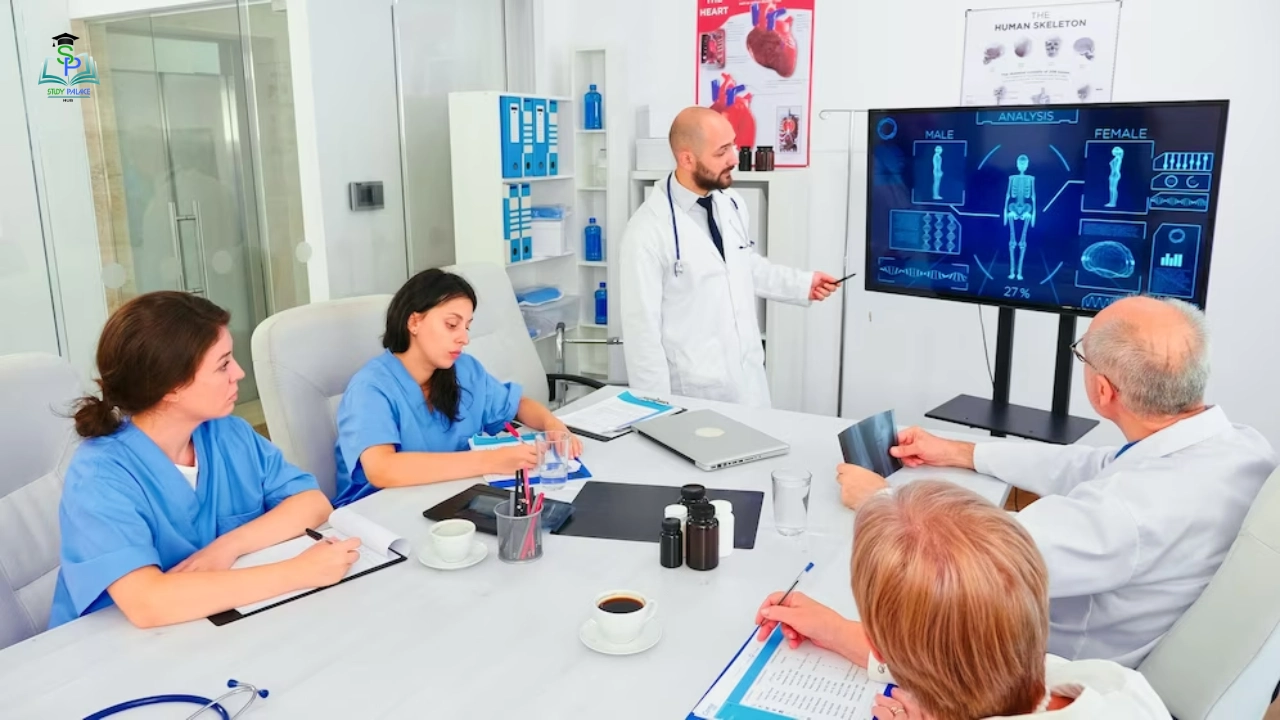Technology has revolutionized the way we learn and work, and the field of medicine is no exception. The integration of technology in medical education has become increasingly important in recent years, as it allows for more efficient and effective learning experiences for future healthcare professionals. In this post, we’ll explore the impact of technology on medical education and why it’s essential for preparing the next generation of healthcare providers.
Virtual and augmented reality simulations
The Future Of Medical Education is one of the most exciting developments in medical education technology is the use of virtual and augmented reality simulations. These simulations allow students to practice procedures and surgeries in a safe, controlled environment, without the risk of harming real patients. They can also provide a more immersive learning experience, allowing students to explore the human body in 3D and gain a deeper understanding of anatomy and physiology. As technology continues to advance, we can expect to see even more sophisticated simulations that will further enhance medical education.
Online learning platforms and resources
Another way technology is impacting medical education is through the use of online learning platforms and resources. These platforms allow students to access course materials, lectures, and interactive activities from anywhere with an internet connection. This can be especially beneficial for students who may not have access to traditional classroom settings or who need to balance their education with other responsibilities. Additionally, online resources such as medical journals and databases provide students with up-to-date information and research in their field. As technology continues to evolve, we can expect to see even more innovative ways for students to learn and grow in the medical field.
Electronic health records and telemedicine.
Technology has also revolutionized the way healthcare professionals access and share patient information. Electronic health records (EHRs) have replaced traditional paper records, allowing for more efficient and accurate documentation of patient care. EHRs also allow for easier sharing of patient information between healthcare providers, improving coordination of care and reducing the risk of medical errors. Telemedicine, or the use of technology to provide remote healthcare services, has also become increasingly popular. This allows patients to receive care from the comfort of their own homes and can be especially beneficial for those in rural or underserved areas. As technology continues to advance, we can expect to see even more innovative ways for healthcare professionals to provide high-quality care to their patients.
Personalized learning and adaptive assessments
The Future Of Medical Education is one of the most exciting impacts of technology on medical education is the ability to personalize learning and provide adaptive assessments. With the use of online platforms and learning management systems, educators can tailor their teaching to meet the individual needs of each student. This can include providing additional resources or practice exercises for students who need extra help or challenging more advanced students with higher-level content. Adaptive assessments can also be used to evaluate students’ knowledge and progress in real-time, allowing educators to adjust their teaching strategies accordingly. This personalized approach to learning can lead to better outcomes for students and ultimately, better healthcare for patients.
Collaborative and interdisciplinary education

Another impact of technology on medical education is the ability to facilitate collaborative and interdisciplinary learning. With the use of online platforms and virtual simulations, students from different healthcare disciplines can work together to solve complex cases and learn from each other’s perspectives. This type of education can help break down silos between healthcare professions and improve communication and teamwork in real-world healthcare settings. Additionally, technology can connect students with healthcare professionals from around the world, providing opportunities for global collaboration and learning.
Benefits of Using Technology in Medical Education
These are just a few of the ways that technology is changing medical education. As technology continues to evolve, we can expect to see even more innovative ways to use technology to improve medical education.
Here are some of the benefits of using technology in medical education:
-
- Improved learning outcomes: Studies have shown that students who use technology in their education tend to have better learning outcomes than those who do not.
-
- Increased access to education: Technology can help to increase access to medical education, especially for students who live in rural areas or who cannot afford to attend a traditional medical school.
-
- Personalized learning: Technology can be used to create personalized learning plans for each student, which can help students learn more effectively.
-
- Improved patient care: Medical students who use technology in their education are better prepared to provide patient care. This is because they have access to more information and resources, and they are able to practice their skills in a safe environment.
Conclusion:
Overall, technology is having a positive impact on the future of medical education. Technology is helping to improve learning outcomes, increase access to education, and improve patient care. As technology continues to evolve, we can expect to see even more innovative ways to use technology to improve medical education.
Read More : Medical Education in Russia


